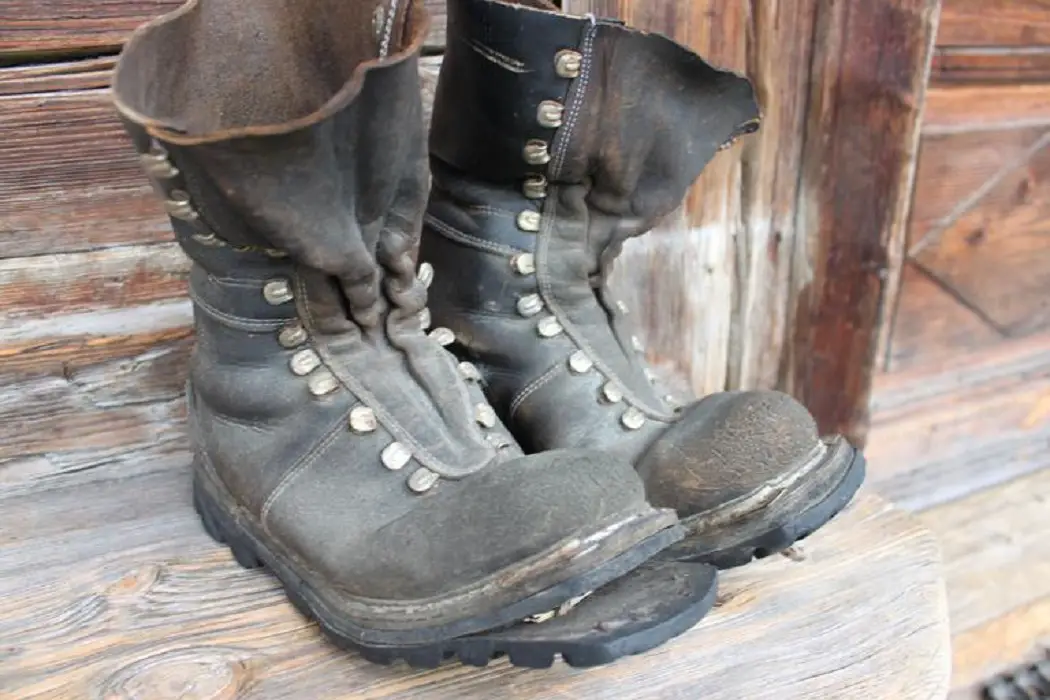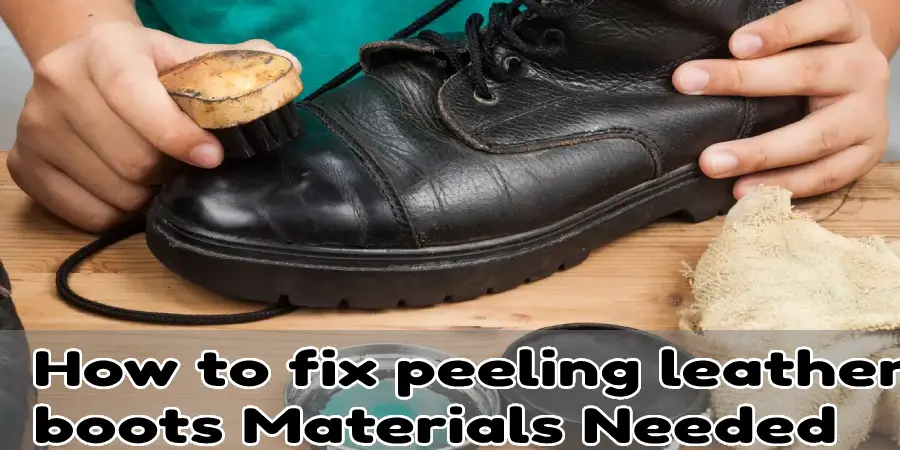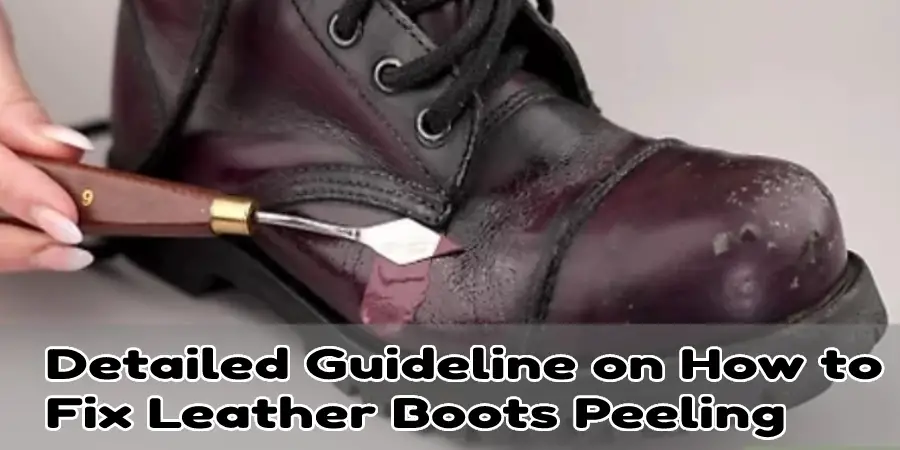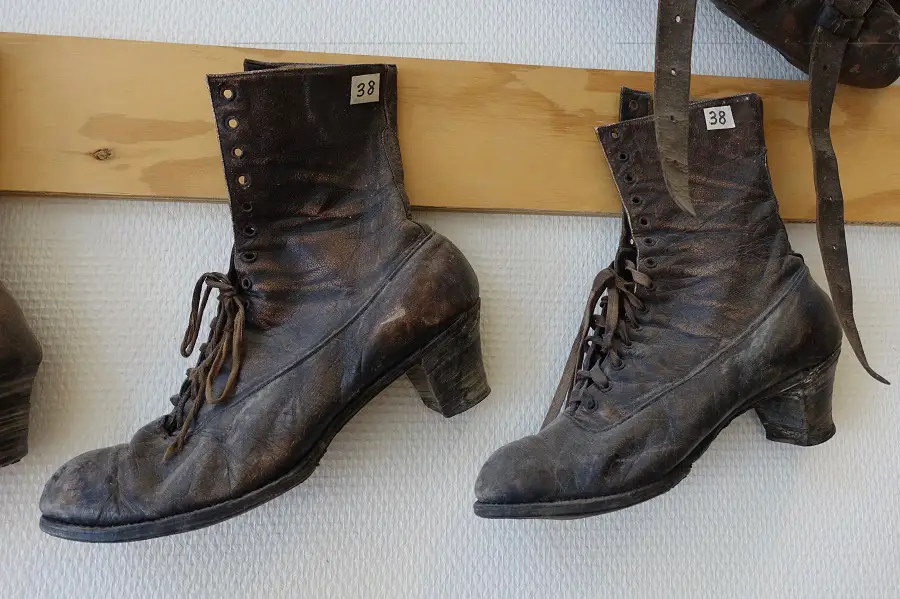Leather shoes have been a staple in the fashion industry for decades. The leather shoe is seen as one of the most important pieces to any outfit, whether it’s casual or formal. However, there are many benefits that come with wearing leather shoes and many problems without them.
For example, they’re easy to clean and maintain because they can be polished easily, unlike other materials such as cloth or rubber which cannot be cleaned so easily.

If you’ve ever had a pair of leather boots that started to peel, then you know how frustrating it can be. Peeling is usually caused by moisture getting in and causing the top layer of leather to dry out and crack. This article will go over some potential causes for peeling, as well as steps on how to fix leather boots peeling.
How Can You Avoid Your Leather Boots From Peeling?
The best way to avoid peeling is by applying a leather conditioner every six months. If you notice your boots are starting to peel, rub the area with some natural oil like olive or coconut and wait for it to soak in before wearing them again. This will help restore their moisture and prevent further damage from occurring. Alternatively, there are also products like Kiwi Guard and Sno Seal available at shoe stores.
How to fix peeling leather boots?
Materials Needed:
- A hairdryer
- Cleaning cloths or a rag

Detailed Guideline on How to Fix Leather Boots Peeling
It’s not just boots that suffer this problem; peeling leather shoes are also common: high-heeled pumps with gorgeous buckles on the front, lace-up fronts straight out of cowboy movies, and sleek tan heels or zippers at the side all experience it when animal skin begins to lose its outer layer for protection against moisture as well as wearability inside footwear (though there are exceptions).
The key is understanding why this happens in order to figure out how best to fix them. Leather has an inner grain – layers within each piece where some fibers stretch while others contract. When you take your brand new pair of boots home and break them in around town, the leather begins to stretch and absorbs some of your moisture from sweat, which softens it.
This is why you should always take care when breaking in a new pair or else they may never form to your foot as well as give an attractive look.

Wipe it off with a damp cloth; use a leather conditioner to keep the surface moisturized and prevent future peeling; let your footwear dry naturally in an area that is not humid, or use a hair drier for about five minutes on a low heat setting.
Do this before they get wet from rain or other water exposure. This will also help you maintain their shape by preventing them from shrinking in size if they are sued leather boots; repeat these steps as necessary to fix peeling boot heels until your shoes look like new again!
How to Store Your Leather Boots?
Ideally, store your footwear in a cool and dry area out of the sun. If you are storing them for long periods of time (more than six months), we recommend that you place newspaper or shoe trees inside to help maintain their shape; alternatively, fill up some old socks with rice and then tie off each end to create an internal bootie. This will serve as a natural deodorizer if they start smelling too bad after prolonged use.

It’s best not to just leave shoes on top of one another because this may cause permanent creases down the middle – which is why it can sometimes be difficult to break in new leather boots!
How Long Does It Take for These Methods to Take Effect?
It is impossible to say how long it takes because there are too many variables at play such as quality, thickness, and type of your boots. It can take anywhere from 15 minutes to an hour, depending on these factors.
What Are Your Methods for Fixing the Wet, Dry and Upper Layer of the Boot From Water Coming Into the Boot From Rain or Snow?
- If the water is coming in because of rain, you can use a towel to dry out the inside.
- For snow, just wait for them to melt!
When Should You Stop Trying and Buy a New Pair of Boots?
If your boots have deep cracks, the upper layer of the leather is pulling off or peeling away from where it should be glued down.
It can also happen if you’re wearing them every day and they are not taking a break from being worn for more than two days in a row. This will cause permanent creases in the leather.
Every boot will have a different life span, so keep that in mind when you are trying to fix them!
The best time for drying out or repairing your boots is during winter because they don’t get worn as often and it’s not raining outside all of the time.
If you’re being introduced into wearing dress shoes regularly, you should consider buying a new pair of dress shoes every one to two years.
Frequently Asked Questions
Can Peeling Leather Be Repaired?
If you want to restore your leather upholstery, there are a few things that you can do. First, it is important to clean the leather and remove any loose dirt and debris. Next, use a solution of water and soap to loosen the dried glue on the surface of the leather before applying conditioner or polish.
Then if your top layer is damaged somehow, try using a hairdryer on a low setting to heat the area so that it softens. Once softened, apply a mixture of olive oil and water with a small paintbrush for lightening before reapplying your topcoat or doing anything else.
What Causes Leather Boots to Peel?
Leather boots are susceptible to peeling when they get wet and dry repeatedly. This is due to the materials used in making them.
Leather is made from a natural protein called collagen, which is extracted from cowhides and other animals. When it dries out, the proteins stick together like sticky tape, leaving a residue on the surface of the leather. When this residue gets wet again, it causes water to seep into the leather, making it stretchy and weak until finally ripping off with ease.
Is Shoe Goo a Glue?
Shoe Goo is a type of adhesive that can be used to repair shoe soles and uppers. It is also sometimes referred to as glue or superglue. This product was created by the Krazy Glue Company in 1947, which was then renamed Crazy Glue in 1949.
Can You Fix Holes in Leather Boots?
Leather boots can be repaired by using leather repair cream. You should not use any other products to fix holes in leather boots because they may cause damage.
However, if a nail or similar object causes the holes, you can fix them with quick-drying epoxy or hot glue.
Is There a Glue for Leather?
There is no glue for leather because it doesn’t stick to itself.
However, there are some ways that you can fix a tear in your leather. One way is to use a piece of cloth or paper towel and rub the tear into the surface of the leather until it is completely fixed. Another way is to use clear nail polish on the torn area and let it dry before using a regular brush or sponge to buff away any remaining residue.
Conclusion
If you’ve been struggling with how to fix leather boots peeling, then the following tips will help. The first step is determining what type of leather your boots are made out of and where they were produced. Next, determine if the inside or outside surface has peeled on your boot (or both).
You’ll want to use a different product for each side in order to get good results. For example, saddle soap should be used on the inner lining while mink oil works best on outer surfaces. Follow these steps as well as our recommendations below and we’re confident that you’ll have no more problems with peeling!





